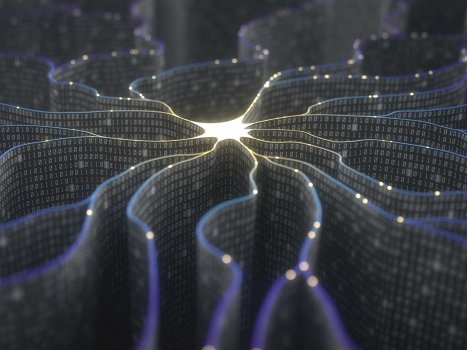K
Kathleen Martin
Guest
Ballyhooed artificial-intelligence technique known as “deep learning” revives 70-year-old idea.
In the past 10 years, the best-performing artificial-intelligence systems — such as the speech recognizers on smartphones or Google’s latest automatic translator — have resulted from a technique called “deep learning.”
Deep learning is in fact a new name for an approach to artificial intelligence called neural networks, which have been going in and out of fashion for more than 70 years. Neural networks were first proposed in 1944 by Warren McCullough and Walter Pitts, two University of Chicago researchers who moved to MIT in 1952 as founding members of what’s sometimes called the first cognitive science department.
Neural nets were a major area of research in both neuroscience and computer science until 1969, when, according to computer science lore, they were killed off by the MIT mathematicians Marvin Minsky and Seymour Papert, who a year later would become co-directors of the new MIT Artificial Intelligence Laboratory.
he technique then enjoyed a resurgence in the 1980s, fell into eclipse again in the first decade of the new century, and has returned like gangbusters in the second, fueled largely by the increased processing power of graphics chips.
“There’s this idea that ideas in science are a bit like epidemics of viruses,” says Tomaso Poggio, the Eugene McDermott Professor of Brain and Cognitive Sciences at MIT, an investigator at MIT’s McGovern Institute for Brain Research, and director of MIT’s Center for Brains, Minds, and Machines. “There are apparently five or six basic strains of flu viruses, and apparently each one comes back with a period of around 25 years. People get infected, and they develop an immune response, and so they don’t get infected for the next 25 years. And then there is a new generation that is ready to be infected by the same strain of virus. In science, people fall in love with an idea, get excited about it, hammer it to death, and then get immunized — they get tired of it. So ideas should have the same kind of periodicity!”
Weighty matters
Neural nets are a means of doing machine learning, in which a computer learns to perform some task by analyzing training examples. Usually, the examples have been hand-labeled in advance. An object recognition system, for instance, might be fed thousands of labeled images of cars, houses, coffee cups, and so on, and it would find visual patterns in the images that consistently correlate with particular labels.
Continue reading: https://scitechdaily.com/deep-learning-ai-explained-neural-networks/
In the past 10 years, the best-performing artificial-intelligence systems — such as the speech recognizers on smartphones or Google’s latest automatic translator — have resulted from a technique called “deep learning.”
Deep learning is in fact a new name for an approach to artificial intelligence called neural networks, which have been going in and out of fashion for more than 70 years. Neural networks were first proposed in 1944 by Warren McCullough and Walter Pitts, two University of Chicago researchers who moved to MIT in 1952 as founding members of what’s sometimes called the first cognitive science department.
Neural nets were a major area of research in both neuroscience and computer science until 1969, when, according to computer science lore, they were killed off by the MIT mathematicians Marvin Minsky and Seymour Papert, who a year later would become co-directors of the new MIT Artificial Intelligence Laboratory.
he technique then enjoyed a resurgence in the 1980s, fell into eclipse again in the first decade of the new century, and has returned like gangbusters in the second, fueled largely by the increased processing power of graphics chips.
“There’s this idea that ideas in science are a bit like epidemics of viruses,” says Tomaso Poggio, the Eugene McDermott Professor of Brain and Cognitive Sciences at MIT, an investigator at MIT’s McGovern Institute for Brain Research, and director of MIT’s Center for Brains, Minds, and Machines. “There are apparently five or six basic strains of flu viruses, and apparently each one comes back with a period of around 25 years. People get infected, and they develop an immune response, and so they don’t get infected for the next 25 years. And then there is a new generation that is ready to be infected by the same strain of virus. In science, people fall in love with an idea, get excited about it, hammer it to death, and then get immunized — they get tired of it. So ideas should have the same kind of periodicity!”
Weighty matters
Neural nets are a means of doing machine learning, in which a computer learns to perform some task by analyzing training examples. Usually, the examples have been hand-labeled in advance. An object recognition system, for instance, might be fed thousands of labeled images of cars, houses, coffee cups, and so on, and it would find visual patterns in the images that consistently correlate with particular labels.
Continue reading: https://scitechdaily.com/deep-learning-ai-explained-neural-networks/

